Last Updated on January 28, 2025 by Kirsten Raccuia
If you came here looking for info on how to see monarch butterflies in Mexico, then you are in luck.
We just got back from seeing them, so we know the ins and outs of the experience.
It’s the most wonderous journey that left me feeling like a kid jumping in a pile of leaves in the heart of fall. Remember when that was fun? When you jumped on a pile of leaves, and it didn’t leave you bruised, let alone with a broken leg?
It’s that kind of sheer joy and kidlike wonder I felt seeing the monarch butterfly migration in Mexico. I vacillated between smiling as big as a kid at Disneyland and tearing up from the amazement of this natural phenomenon.
If you are into seeing the miracle of nature, then this is something you should put on your bucket list. My words and pictures don’t do it justice, but I’m going to try.
And, drumroll, please, this is how you do it.
But first: Watch our monarch butterflies in Mexico video:
The monarch butterfly migration to Mexico miracle
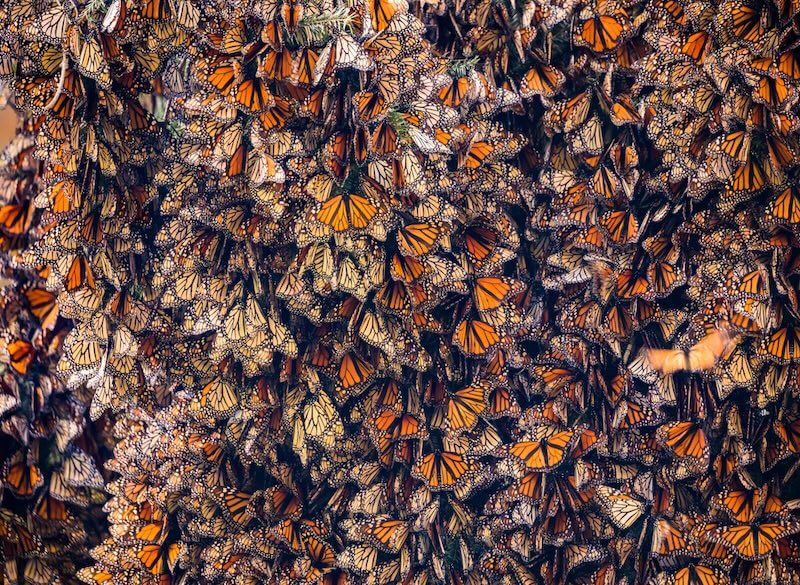
Before we dive into how to see them, let me blow your mind with some info about this whole miracle.
Monarch butterflies weigh as much as a paperclip (seriously), and the adult wingspan can reach up to 4.5 inches.
They only eat milkweed plants, which are toxic to many of their predators. They store the toxins in their outer skin cells, acting as a defense shield against their enemies. Good thing, too, because they have a very long journey, and the odds are already stacked against them making it.
From Canada and the United States to central Mexico is about 2800 miles — the longest migration of any insect.
The Methuselah generation of Monarch butterflies
So, get this, most adult monarch butterflies only live for 3-4 weeks, but the migration takes at least three months, and that’s only one way. So, how is this Mexico monarch migration possible?
It’s all about the Methuselah generation.
Once a year, at the end of the summer, the mysterious Methuselah generation is born. These are the only butterflies that live up to nine months.
While in the north, they store nectar, not just milkweed, to fuel the journey. In August, they start their trek to a place neither they nor their parents (or grandparents) have ever been.
At night, they roost clustered in the tree trunks and branches and snuggle up tight to keep warm.
In early November, they start appearing in the oyamel fir forests near Mexico City with the sole purpose of mating before making the long trek back in March.
The legend of the monarch butterflies
In Mexico, the Day of the Dead (Dia de los Muertos) is celebrated starting November 1, which coincidentally (or not) is when the butterflies start to appear.
Some local indigenous communities believe the butterflies are the souls of their loved ones coming back from the dead.
Others believe they are spirits of the forest or messengers of the gods.
No matter what you believe, they are sacred creatures and very much honored here.
Is it safe to travel to see the monarch butterflies in Mexico?
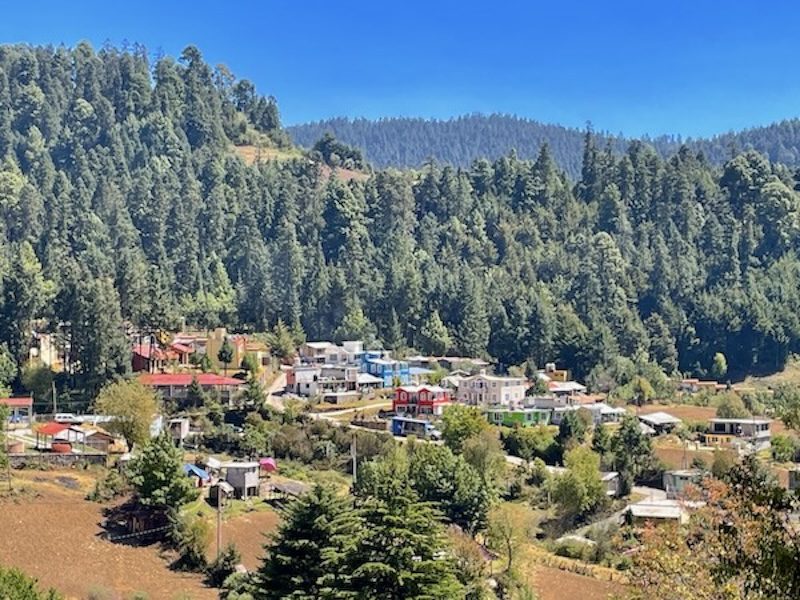
Yes. It’s totally safe! Or we wouldn’t have done it.
We drove ourselves, and not for one minute did anything seem sketchy. There were tour buses of students and group tours on the trails and in the towns. It’s a busy little area.
Using common sense and taking normal safety precautions, like we do living in Puerto Vallarta, will keep you safe in Mexico.
There are options for Mexico monarch butterfly tours if you feel more comfortable going that route.
Best time to see monarch butterflies in Mexico
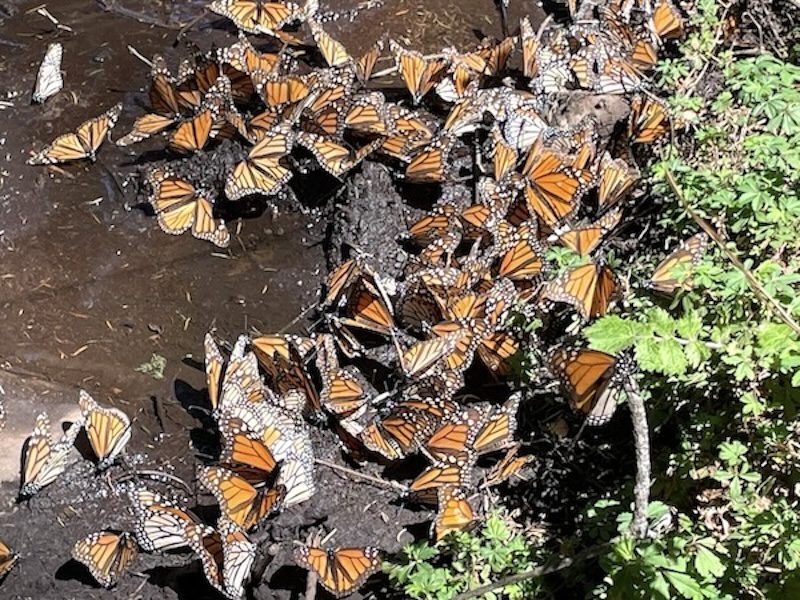
The monarchs arrive in Mexico in early November and stay until March. But the best time is January and February. They cluster in the trees and aren’t as active if it’s chilly outside. But if you wait until March, they are already starting to make the flight back.
Whenever you go, be at the top by midday when the sun is out and the temperatures are at their peak. That is when you’ll see millions of them in flight.
Literally, millions.
How many monarch butterflies are in Mexico?
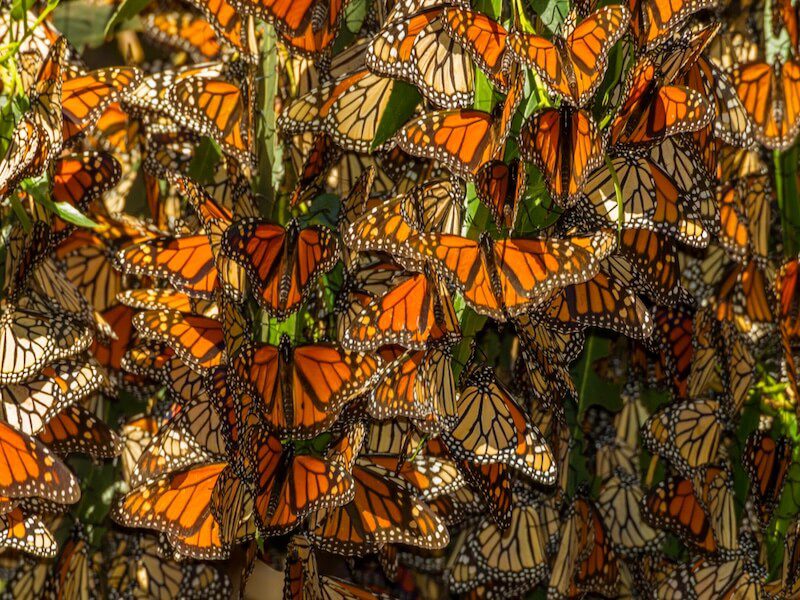
Colonies of about 20 million migrate at the same time. Depending on the weather and wind, they can travel up to 120 nautical miles daily. Their little wings aren’t that strong, so they take advantage of the warm air currents and glide as much as possible throughout the long trip.
Why do monarch butterflies migrate?
Those Methuselah butterflies are kind of picky about mating. They need a little wooing, a little wining and dining, if you will. They need crystal-clear streams, warm weather conditions, and silence. Seriously.
Without those elements, no monarch mating magic.
Where to see monarch butterflies in Mexico
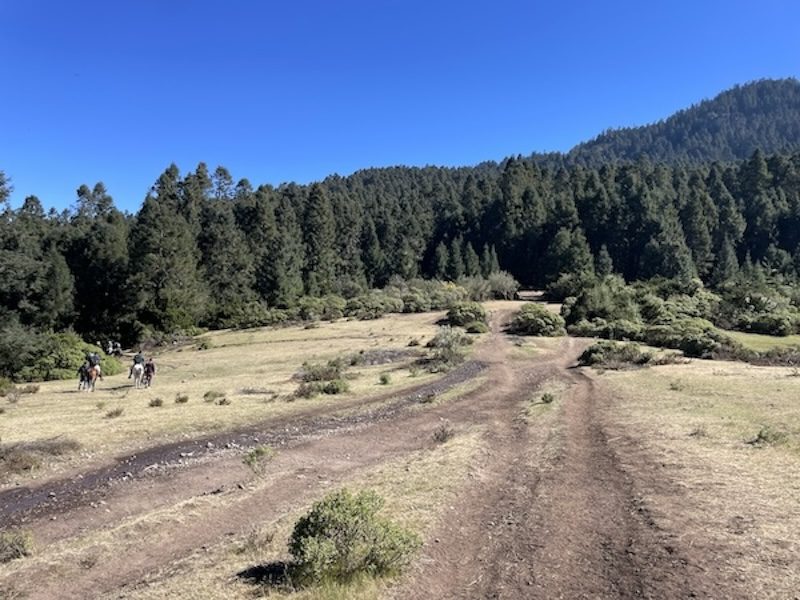
All the places to see the monarch butterflies in Mexico today are between Mexico City and Morelia. Both cities have international airports, but you’ll most likely be flying into Mexico City unless you’re already in the country.
Do yourself a favor and spend at least three days in Mexico City on either end of your butterfly trip. There is so much to do there — it’s a fascinating city. There is a reason so many expats live there.
There is a Mexican monarch butterfly biosphere reserve that was made a UNESCO World Heritage site in 2008. It covers two states — Michoacan and Mexico — but not all of it is open to the public.
The most popular places to see the monarchs in Michoacan are the El Rosario and Sierra Chincua sanctuaries.
In Mexico State, Piedra Herrada is the most traveled. The other options are El Capulin and La Mesa.
Check out this map to see the Monarch butterfly migration Mexico locations:
Our experience getting from Mexico City to the Monarch Butterfly Biosphere Reserve

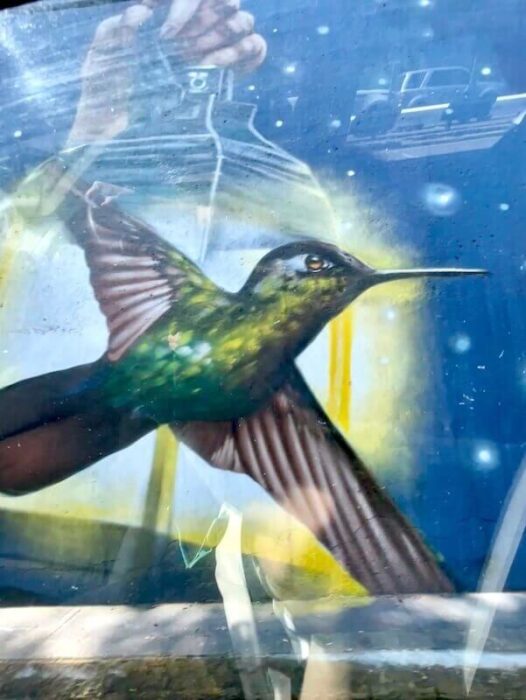
We flew to Mexico City and then rented a car from the airport. We booked the car ahead of time so there wouldn’t be issues. This was an important travel experience, and we weren’t leaving any factors to chance.
Once we landed, we walked past the baggage carousels and followed the signs to the salida, or exit. That’s where we found Avis. After reviewing the paperwork, we walked outside and found the Avis shuttle van, which took us to our car.
After inspecting it with a fine tooth comb, we hopped in, connected to Waze (our preferred maps app), and started the frenzied ride through the streets of Mexico City.
Actually, driving in the city wasn’t nearly as bad as driving in Asia. At least people here use the lanes as more than a suggestion. They might be aggressive and refuse to use their blinkers, but at least they don’t turn the left blinker on and go right just to fake you out.
It took us an hour and a half to get out of the city. And it was a Wednesday at midday.
Imagine if it was a weekend.
But since we were going so slow, we did get a good look at some of the cool murals painted along the side of the highway.
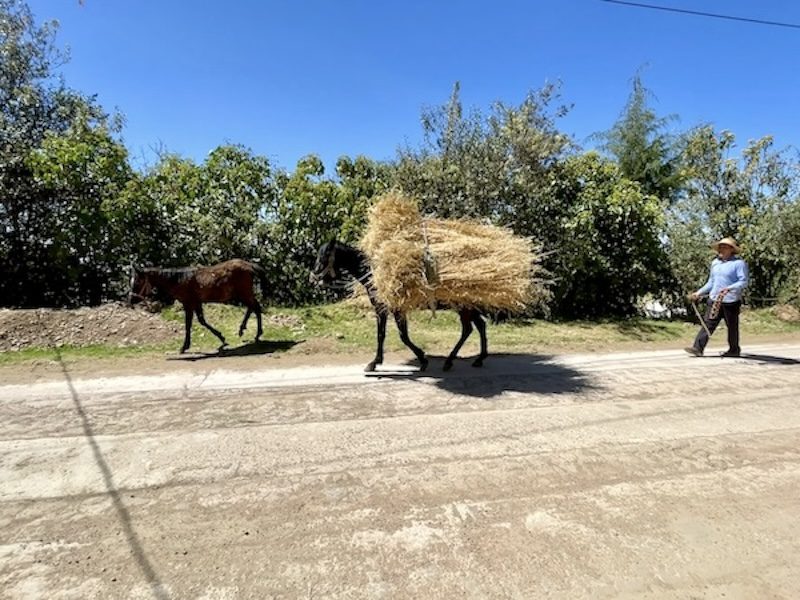
Once we got out of the city, it was smooth sailing along the toll road until the dreaded cloverleaf that was under construction. After getting on and off three out of the four loops and paying tolls at each stop, we finally got onto the correct one. Damn you, Waze.
As we neared the butterfly sanctuary, we drove through small towns and pueblos until we reached Angangueo.
Getting to the El Rosario Bioreserve (Reserva de la Biósfera Santuario Mariposa Monarca) from Angangueo was a breeze. It took about 20 minutes through town and up into the mountains. The views of the valley below were breathtaking.
And getting a peek into how daily life takes place in such a rural area was like stepping back in time.
What it like inside the El Rosario Monarch Butterfly Sanctuary
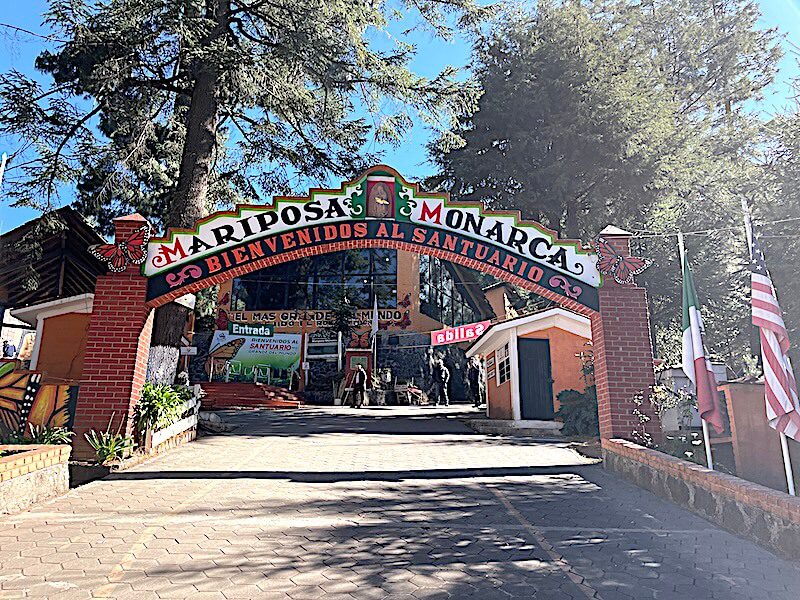
As we neared the sanctuary, we came across a chain in the road with a few people sitting on either side. They are the parking attendants. Pay them 50 pesos, and they’ll hand you a ticket.
Once you get inside, someone will direct you to a spot. It all sounds very official like a concert or sporting event, but I can assure you, it’s not. Just friendly locals doing their job.
As soon as we got out of our car, a woman with a menu asked if we were ready to eat. Since we weren’t, her daughter decided to sing us a song and follow us to the bathroom, waiting and singing until we gave her a few cents.
Then we walked up to the entrance, paid our 80 pesos each and went through the turnstiles.
Guides? No guides for you!
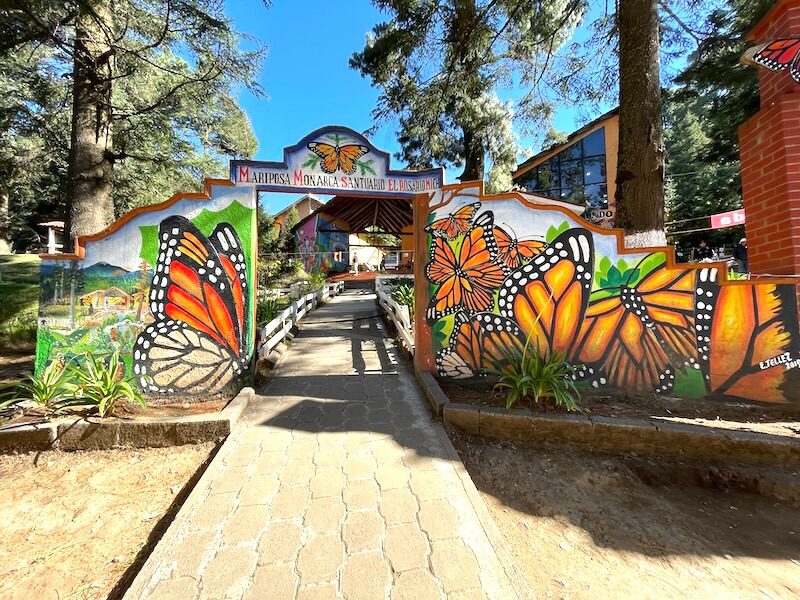
We asked in Spanish for an English-speaking guide, but she shook her head and told us no.
Over the years, we’ve learned that wildlife guides are indispensable. They are the ones who spot leopards and know the secret spots no one else does. They know all the tricks and the details.
We were disappointed, but the show must go on, and we had a decision to make.
To hike or to horse?
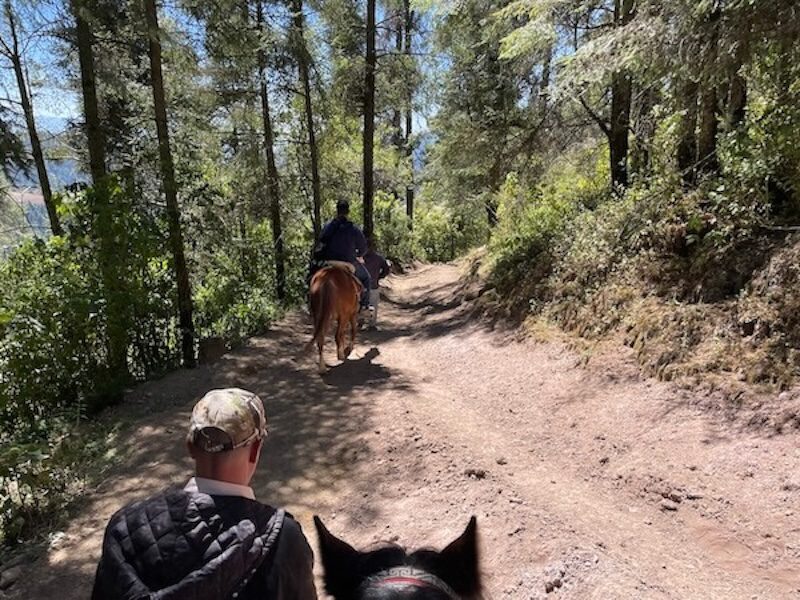
Do we hike up to the top, where the butterfly colony is? Or do we take a horse part way and hike the rest. We went for the horses. I mean, how often do you get to ride horses into the mountains looking for flitting butterflies?
I hopped on top of Lucido, my pretty black and white horse and Carmelo, my horse handler-man, started us off. As we climbed along the path dappled with sunbeams, all we could hear was the sound of the horse’s footsteps and birds chirping.
After about 35 minutes, we made it to an open field and our first real sight of butterfly magic. There were thousands of them everywhere. I was so happy. I wanted to lie down in the field and just be still.
I had no idea what was in store.
Through bad charades and even worse Spanish, we figured out this was the end of the road for the horses. The rest was on foot. And so, we went.
In the monarch forest
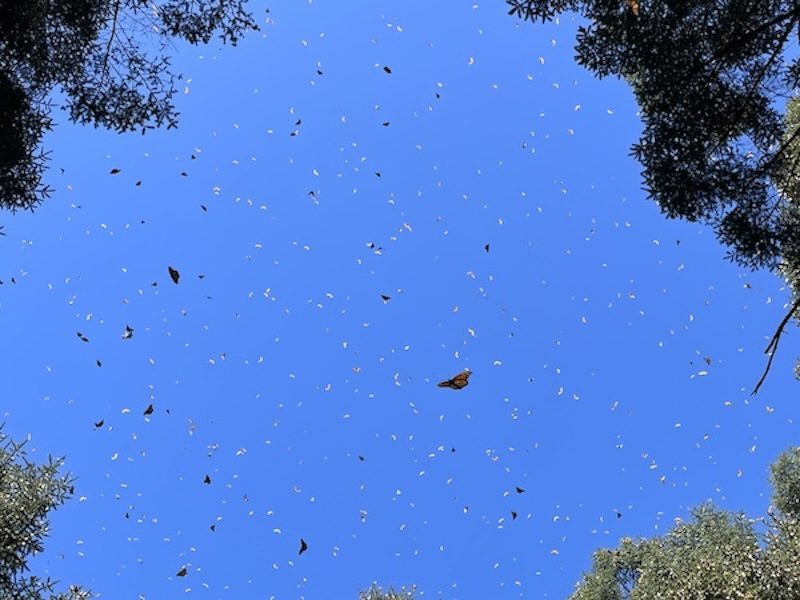
About five minutes into the Mexican butterfly forest, we started to see more and more monarchs. The deeper we walked, the more we saw. Some mating. Some fluttering from tree to tree.
It was only about 10:15 am, and many were huddled in hordes on the branches. They close their rust-colored wings when cold or sleeping, so they could easily be mistaken for leaves on the trees in the fall.
But then, as they slowly warm up, they become more active.
There were moments when I was standing in a beam of light, and they would fly straight at me like I was part of their colony.
When they feel warm enough, as if on cue, thousands of butterflies open their sunset-hued wings and take off simultaneously.
Poof! Like a mass exodus of butterflies overhead. A symphony of butterfly wings.
The hike from the field was supposed to be about 30 minutes, but we were so awestruck we spent hours in the forest. I read they limit your time at the top, but we didn’t notice that.
What we did notice were all the English-speaking guides. I’m not exactly sure how that got lost in translation, but when you go, if one person says no, then move along and ask someone else. There are indeed plenty of English-speaking guides.
After watching the butterflies for a few hours, we decided to make our way down. We only booked our trusty steeds one way. But there were a bunch of horses waiting at the same place we got dropped off. So, we got back on our horses and returned to base camp.
Leaving El Rosario monarch butterfly sanctuary in Mexico
As we started driving down the mountain toward town, we were stopped by a chain across the road. Suddenly, a pair of cute little dust-covered girls ran up to our windows, jabbering in Spanish. For a few pesos, they let us pass.
About one minute further. A different pair of giggling sisters did the same thing. They certainly weren’t scary thugs, but we couldn’t say no to those faces. So, bring a few extra pesos for the giggling marauders you might encounter.
Tips for seeing the butterflies in Mexico:

- Do not go on the weekends. Traffic will be abhorrent. And the butterfly sanctuaries will be loaded full of noisy people who won’t follow the rules. We got a glimpse of that on Thursday — I could only imagine how bad the weekends are.
- Bring or wear layers of clothes. It might be warm while hiking, but it gets cool in the shade, and you are high in the mountains, so be prepared.
- Plan for two full days there. If it is cloudy or rainy one day, the butterflies won’t be very active. You’ll see them in the trees, but they won’t be flitting about. And that is the extra magic you want to see.
- When you rent a car, take very good pictures and videos of each and every scratch, ding, or dent on the auto, inside, too. Sometimes, they try to blame you for these dings, but if you have clear pictures of the car, you can prove they were there when you go the rental in the first place.
- Book your accommodations early — as soon as you know you are going. There aren’t a lot of options, and they book up quickly.
- Bring change (monedas) for the bathrooms. It’s 6 pesos, and they give you a little toilet paper.
- Try to get to the reserve around 10:30 so you can be at the top by noon-ish. The butterflies are more active when it’s sunny out and they are warmed up.
- In all my research, people mentioned struggling with the 9000-foot altitude at the top. We were a little out of breath at times, but nothing to think twice about, we’re pretty out of shape, and we came from sea level. If you feel you might have a problem, give yourself a little extra time to adjust before climbing.
How much does it cost to see the monarch butterflies in Mexico?
Well, the way we did it, we spent more in tolls than actually visiting the butterfly sanctuary.
But here is the breakdown of costs:
Parking: 50 pesos
Horses: 170 pesos per person (each way)
Entrance: 80 pesos per person
For a grand total of 890 pesos or $52.30 per couple.
If you would rather go on an organized tour, they range anywhere from 1500 to 5000 pesos. It depends on which sanctuary you go to and if it is just a day trip or an overnight stay. They also have private tours, so if there is a group of you, that is the way to go.
Where to stay to see the Mexico butterflies
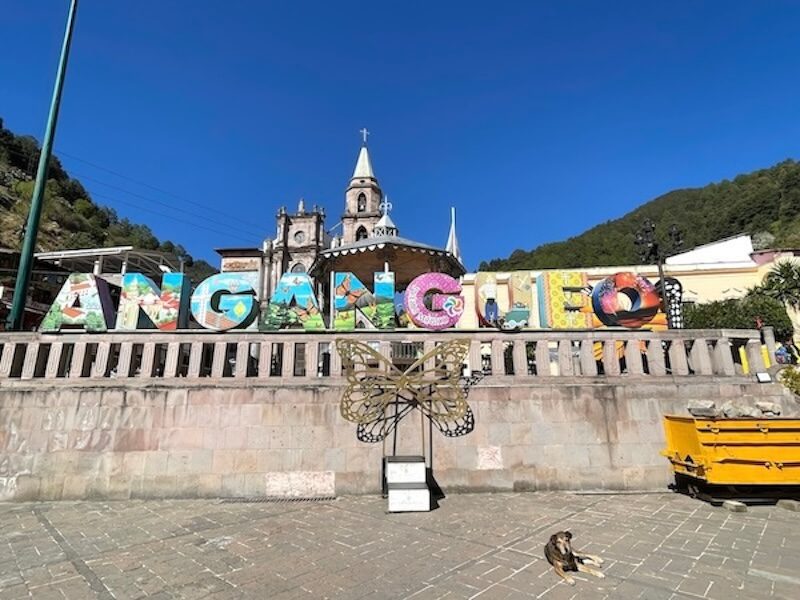
If you want to visit Piedra Herrada, the closest monarch sanctuary to Mexico City, stay in Valle de Bravo. It’s a cute Pueblo Magico known as the “Hampton’s of Mexico City.”
We chose to go to El Rosario because it has the largest colony of butterflies, so we stayed in Angangueo. It’s tiny, and they roll up the sidewalks between 8 and 8:30 pm. Even the one taco stall in the plaza shut down at 8 pm.
I suggest booking your accommodation as soon as you decide to go. We were a little last minute and found one place. It was very basic, but it was clean.
We could have stayed in Ocampo as well, but Angangueo is closer.
If you go to Sierra Chincua, you can stay in Ocampo or Angangueo.
What to pack for the Mexico monarch migration:
- Broken in walking shoes or hikers
- Sunglasses or sun hat
- Water
- Wear layers of clothes that can easily be taken off
- A backpack
- A camera with a good zoom
- Cash. I don’t think credit cards are taken anywhere there.
- Snacks for the hike
- Chapstick. It’s super dry up there. You’re welcome.
It’s your turn to see the monarch butterfly migration in Mexico
If you want to see the humpback whales and then go visit the butterflies, you can combine them into one wildlife-full trip. Easy peasy. Just fly into Mexico City, see the flutterbys, then hop on a one-hour flight to Puerto Vallarta where the whales await! It’s totally doable as long as you come here in January or February. So start planning!
Seeing this migration was by far one of the coolest wildlife experiences in our lives. And we’ve experienced a lot of magic.
I hope you get to see it for yourself!
XO,
K
FAQ:
When is the best time to see the Mexican butterfly migration?
January and February are the best months to guarantee millions of butterflies.
How much time do you need at the sanctuaries?
We spent about four hours and took our time. I wouldn’t plan for less.
Which is the best place to see monarch butterflies in Mexico?
El Rosario is the most popular and has the best tourist infrastructure, with Sierra Chincua a close second.

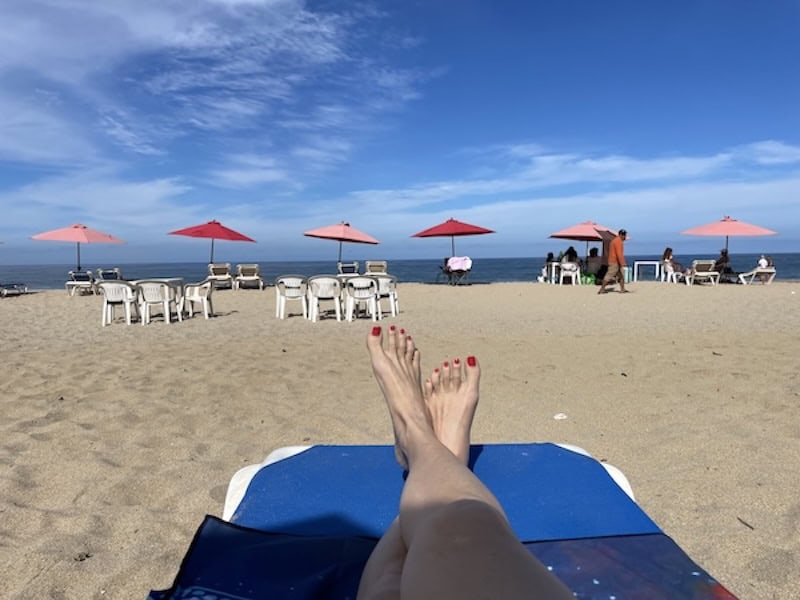
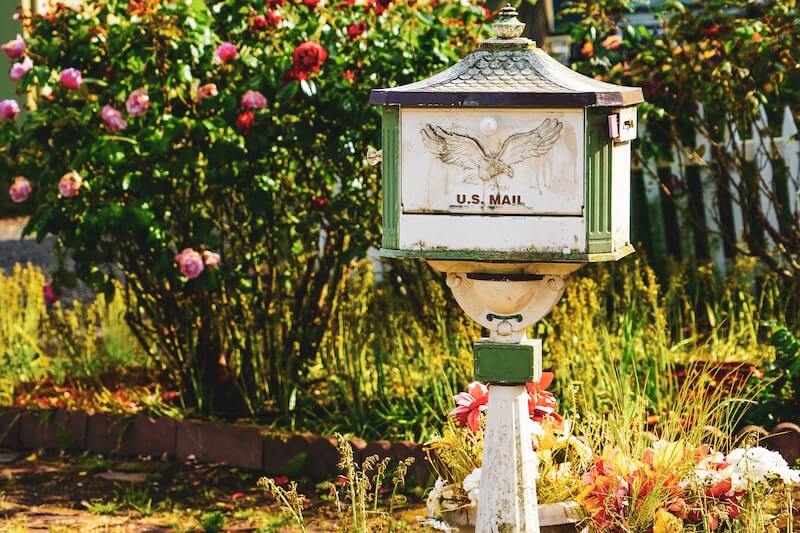
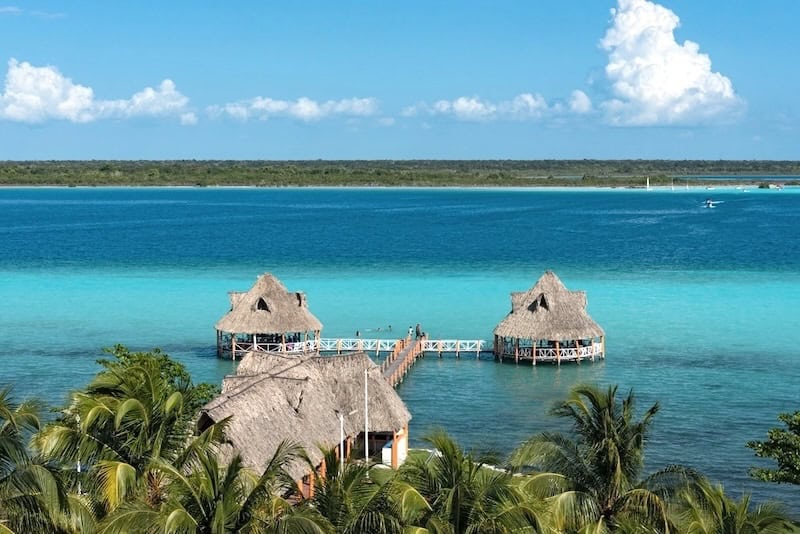
Hello Kirsten,
I’ m so happy I came across your article.
I am planning to go there on the 4th of November.
Do you think it will be too early to see the butterflies?
Thank you, Emanuela. Unfortunatly, that is too early. They don’t start migrating south that early. You’ll have to come back!
What a fantastic write-up! I’ve wanted to see the butterflies for so long, and this is really helpful and just the inspiration I needed to book this for next year. Thanks for this.
Thank you Laura! I’m happy to help you plan it!
Thanks Kirsten, sounds amazing! I’m forwarding this over to my Monarch expert in Utah.
What? Michael, you have a monarch expert? Amazing!
Thanks for the fascinating article! It’s the first time I’ve stopped to read/learn about this famous butterfly migration. So happy for you to have experienced it in person. ♥️
Thanks for reading, Mary! We are very grateful we got to have such an incredible experience!